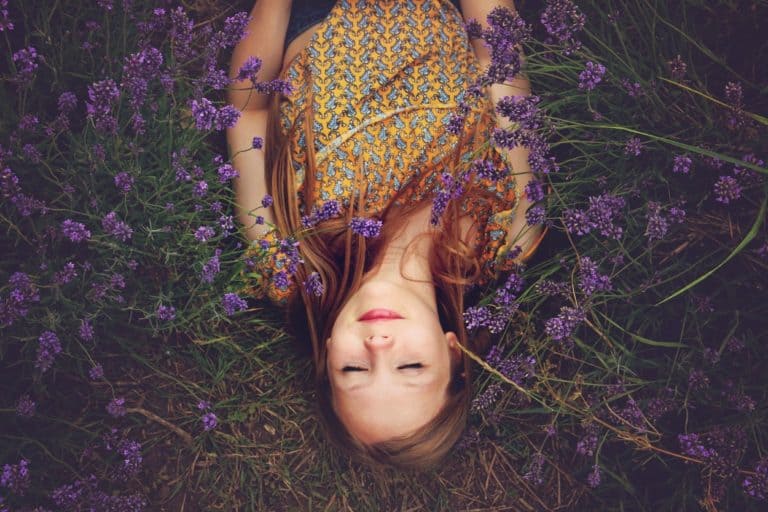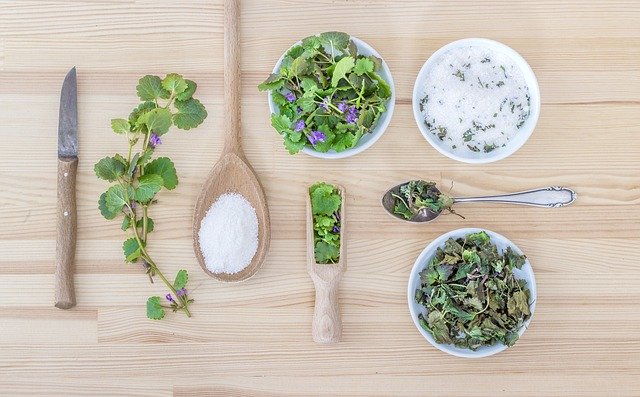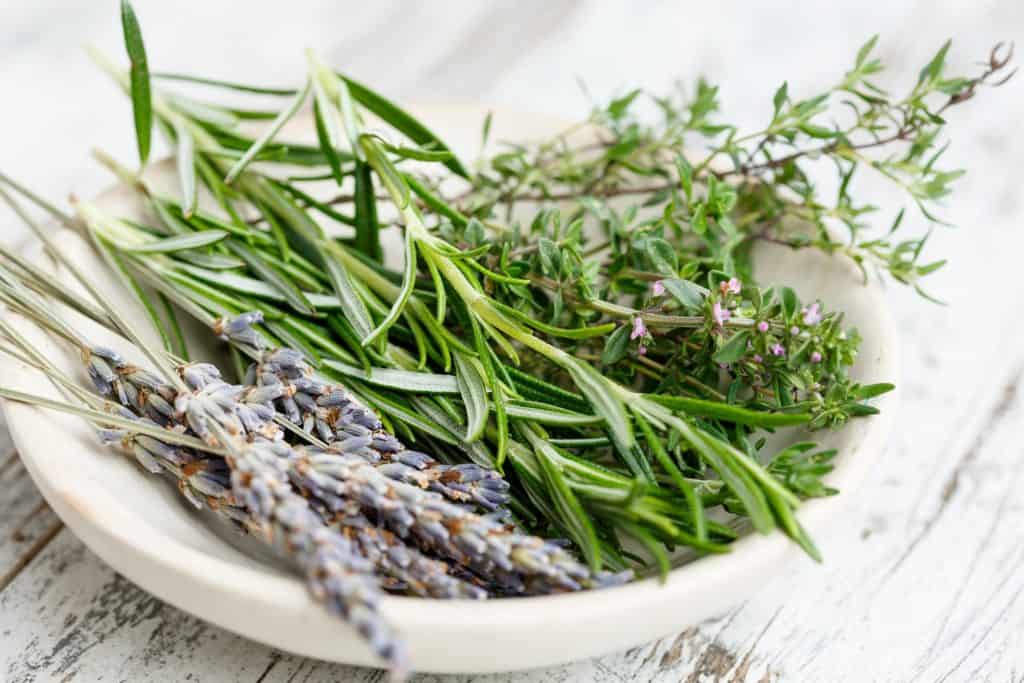Every aspiring home herbalist, needs to grow their knowledge of common herbs right along with their herb gardens.
This post is part of a series on 8 common herbs that can be used for medicines. You might want to consider adding these to your garden and home apothecary. Of course, there’s much more to know about each plant than what’s covered here, but hopefully this will be enough to inspire your curiosity.
One of the best parts of gardening is experimenting and trying new things.
Lavender: For Burns and Sleep
Lavender is a favorite plant medicine among herbalists to use for burns and sleep issues. It works especially well for mild sunburns. And it’s safe enough to use on children. The fragrance alone is reason enough to include it in your garden, I think.
Lavender is a perennial plant that will come back each year if the winter is mild in your location. If not, you’ll need to replant it each year and grow it as an annual. Here in PA, I’ve had it return for a number of years, and I’ve also had it freeze out. Be prepared to replant this as needed. It’s worth it!
The purple flowers are long spikes that jet out from the plant. These beautiful blooms possess healing properties, and as I mentioned above, they smell like heaven!
The long spike of flowers can be woven together and dried to make a decorative item that you can use for a calming effect to your bedroom (or any room).
The dried flowers can be added to sachet packs and also to sleep pillows to put under your regular bed pillow to help you sleep at night. I have a pretty sleep pillow that a youngster stitched for me that I use every night. She even grew the lavender herself. Be sure to get your kids or grandkids involved in gardening. It’s fun for everyone.
To Make Lavender Infused Oil
You can make an infused oil with the flowers. Just chop them up and place them in a jar with oil. (You can buy the lavender flowers already dried online to make your oil if you don’t grow lavender in your garden.)Leave in a cool, dark place for 4 to 6 weeks before removing the flowers.
The oil can then be used in salves or stored in bottles to be used for burns or to help with sleep.
A Happy Accident
Lavender has some really wonderful healing powers, and this story is a great example of that.
There’s a story of the man who discovered the healing powers of lavender oil when he was in the lab one day and his arm was badly burned. He was in a panic and, without thinking, dunked his arm in a big sink full of lavender oil he was testing. The pain was immediately gone, and he had no burns on his arm. He should’ve had third-degree burns or worse. After this, he was a true believer in the healing powers of lavender.
People have also used it for severe sunburns that go deep into the skin. The lavender allows the skin to heal much faster than if it were not treated. It heals at the cellular level, so rather than just masking the pain, it actually starts healing it.

Other uses for Lavender
To freshen your car and provide a bit of calm while driving, try a little dab of oil on a cotton ball or makeup remover pad and clip it to your car’s air vent. When traffic gets crazy, you’ll have the calm of lavender to support you.
It works great for the office too; just add some of your infused lavender oil to a cotton ball and clip it to your fan. Notice how everyone around you is less stressed out during the day. You might also use essential oil in a diffuser for this same effect.
Another way to use it is to add the oil to a rollerball and put it on the bottom of your feet at night before bedtime. I’m amazed at how much better I sleep at night when I use this simple method. I have also dabbed it on my wrist, so that I’m able to inhale the scent as I drift off to sleep.
Summary
When choosing plants for your herb garden, consider adding lavender. Not only is it beautiful to look at, it also smells heavenly and is oh-so-useful in your home apothecary. Please be sure to check out the other posts in this herb medicine series for more inspiration.
Blessed be.
Other Posts in this Series
What is Plant Medicine? The Basics.
Learning Plant Medicine for Beginners
Start your Own Home Apothecary: Tools & Methods
8 Plant Medicines Found in your Kitchen
Plant Medicine to make in the Fall
Disclaimer: I’m not a medical doctor or an herbalist. This article isn’t intended to be medical advice. Not all plants are safe to use. Some are toxic and can be deadly. Other herbs may cause an allergic reaction in some people. Always consult your doctor, healthcare provider or a qualified herbalist before using any type of plant medicine.



